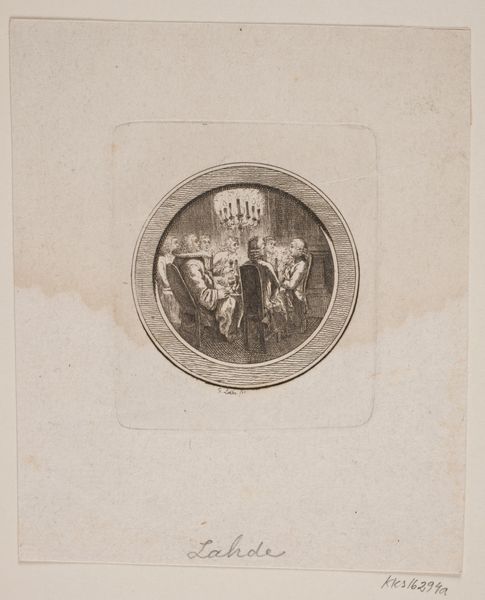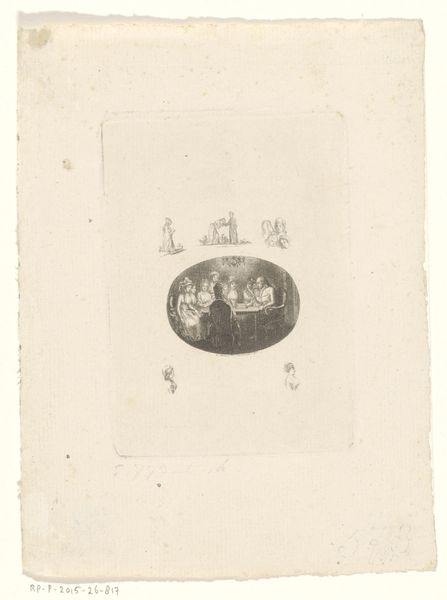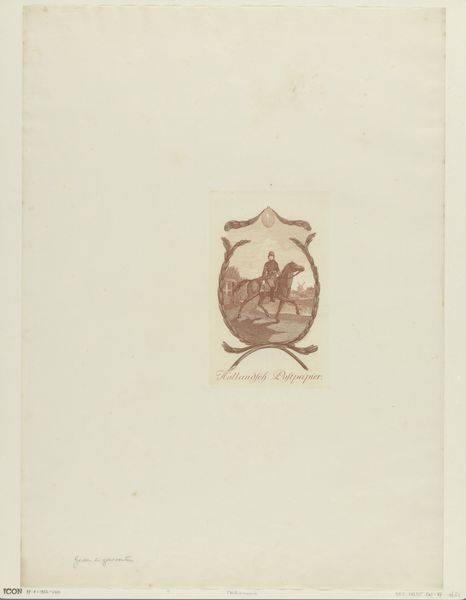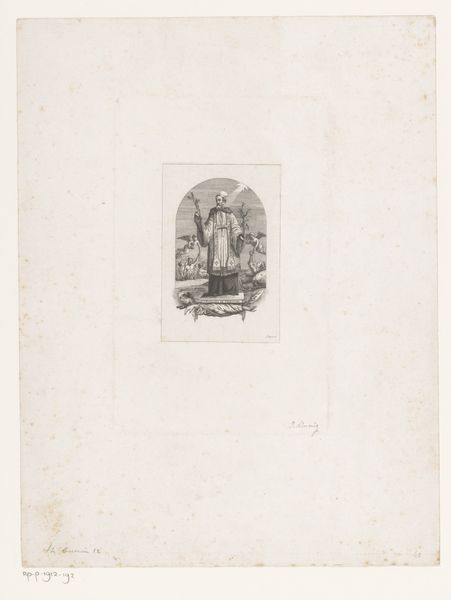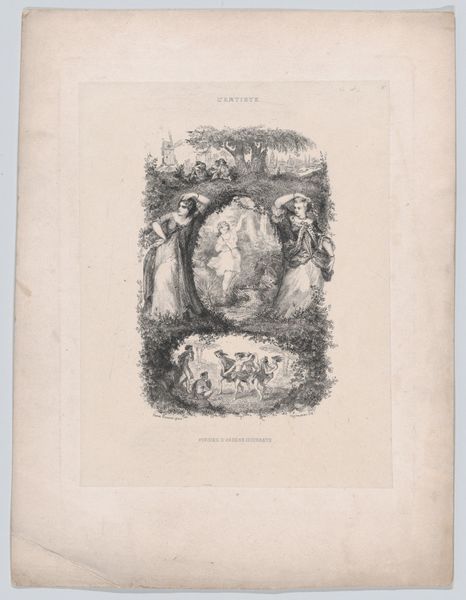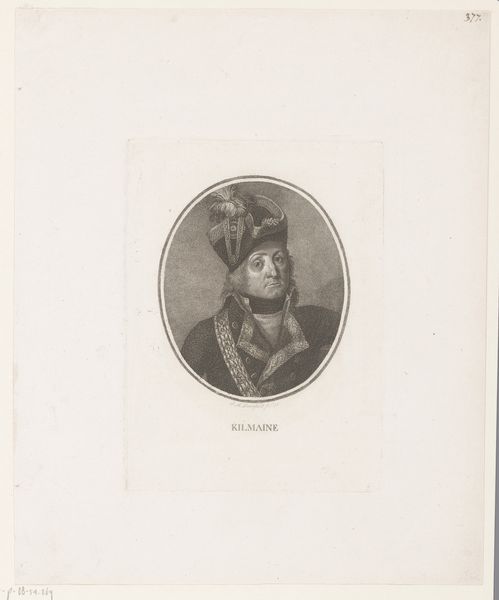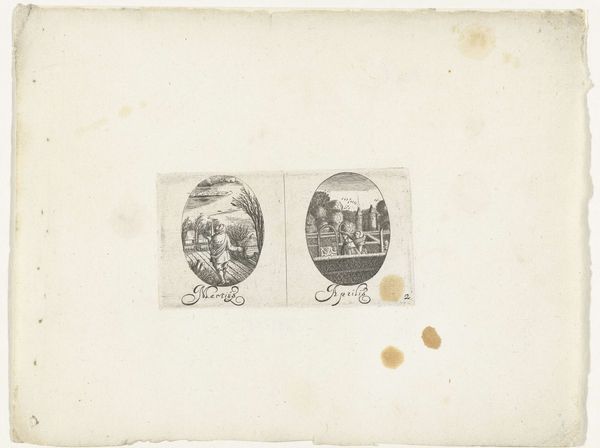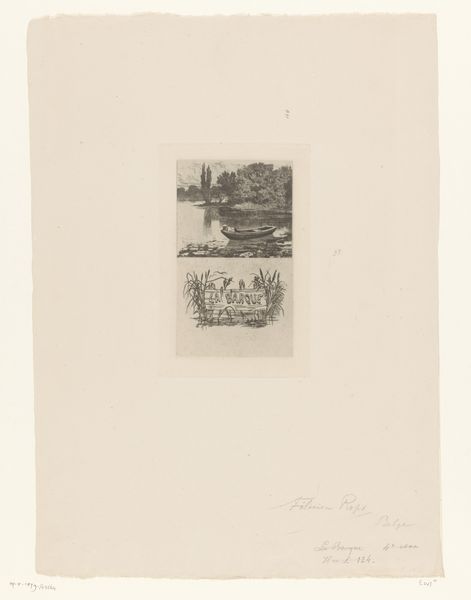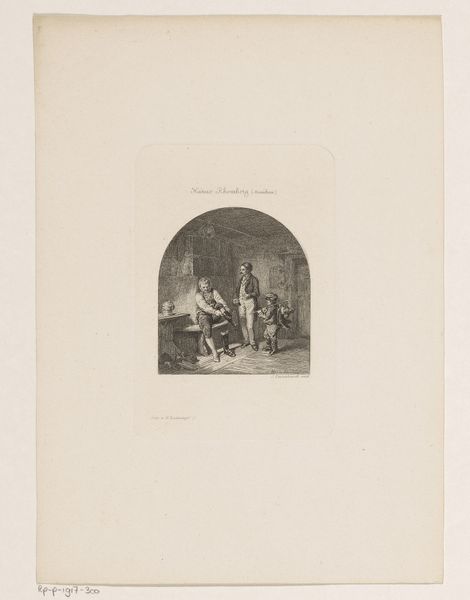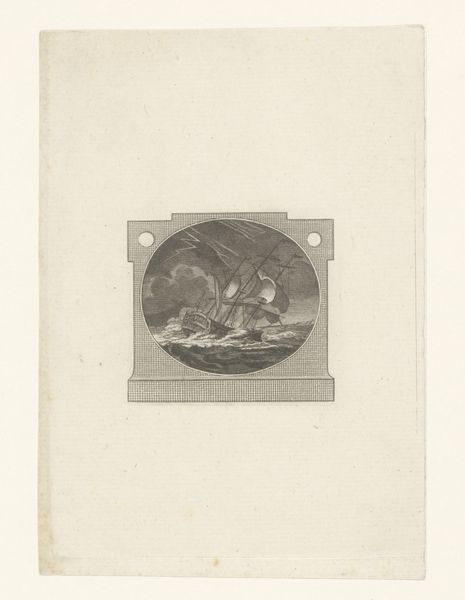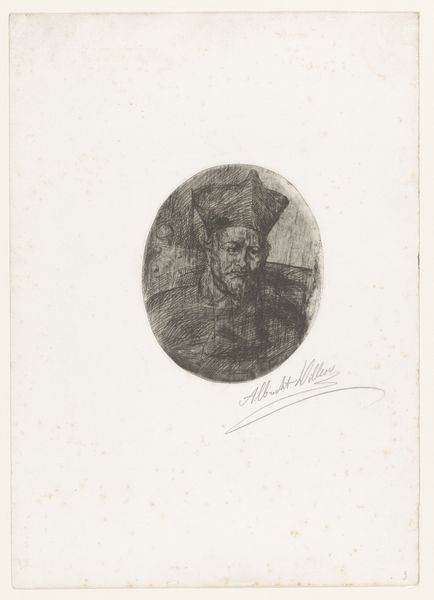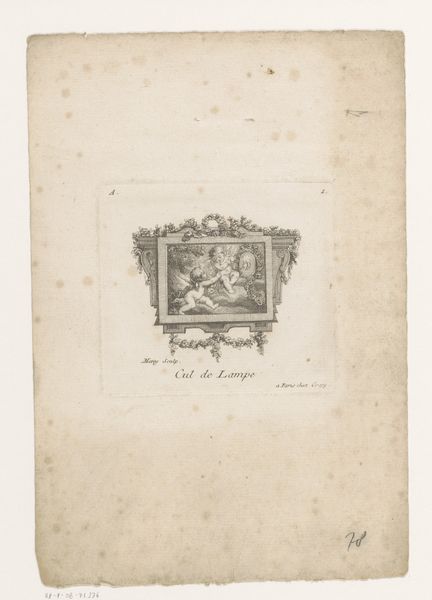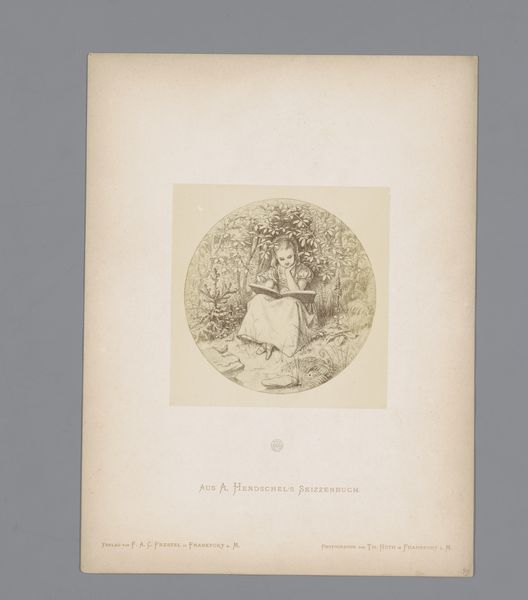
print, etching
# print
#
etching
#
asian-art
#
landscape
#
ukiyo-e
#
line
Dimensions: height 137 mm, width 108 mm
Copyright: Rijks Museum: Open Domain
Curator: So, this subtle yet captivating etching is titled "Japanse stootplaat," dating from around 1840 to 1890. It’s attributed to Philippe Burty, a fascinating figure himself, and renders what appears to be a Japanese sword guard. What’s your immediate take? Editor: Haunting. It's delicate, almost ghostly, like peering through a rain-streaked window at a world both distant and strangely familiar. The fine lines create such a subtle depth; the sword guard looks less like a weapon component and more like some strange portal. Curator: It’s interesting you use the word “portal.” The *tsuba*, or sword guard, isn't merely functional; it’s a canvas brimming with symbolism. Notice the stylized flora and fauna; the crane, for instance, is a common emblem of longevity and good fortune. Editor: Absolutely. And the three rectangular openings within the tsuba—they feel almost like barred windows. Is there any sense of why the artist chose this object? Curator: Burty was a key figure in the Japonisme movement, so it reflects a broader European fascination with Japanese aesthetics. The *ukiyo-e* influence, the 'floating world,' is strong—suggesting transient beauty and everyday life elevated to art. He likely selected the guard because it distilled elements of Japanese culture he admired into a single, tangible artifact. The choice of etching as a medium reinforces the delicate and intimate mood of the depicted guard design. Editor: Right, and the etching itself adds another layer of distance, or perhaps reverence. It’s not just an object, it’s an idea about an object, viewed through a European lens… with its own anxieties, maybe. I can’t help thinking of cultural appropriation, filtered through genuine artistic appreciation and inevitable misunderstanding. Curator: A valid point. While admiration is evident, the act of translation is never neutral. However, works like this reveal how cultures impact and inform one another, building our understanding of global history through imagery and association. Editor: It’s made me reflect again about how easily visual symbols are lifted, divorced from their origins and repurposed for wholly different ends, or how much visual motifs can be misunderstood across the cultures. Fascinating indeed.
Comments
No comments
Be the first to comment and join the conversation on the ultimate creative platform.
